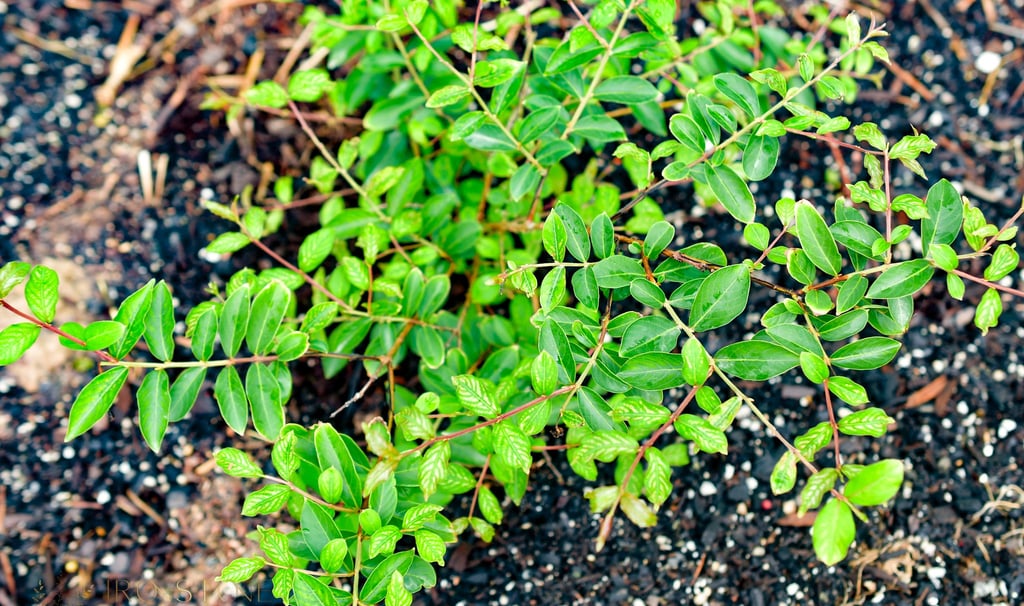Reading Plants: Understanding the Signals They Send


Plants are living, dynamic organisms that communicate their needs through changes in their appearance, such as variations in leaf colour, growth patterns, or overall structure. For gardeners, learning to "read" these signals is a skill that develops with observation and experience. When something isn’t quite right—whether it’s a nutrient deficiency, watering issue, or environmental stress—plants often give subtle, visual clues.
Understanding these clues is both an art and a science. It involves recognising what healthy growth looks like for a particular species and interpreting any deviations from that standard. For example, a plant displaying pale leaves with green veins might be experiencing a nutrient deficiency. Investigating further—by considering the plant's environment, soil, and watering practices—can help identify the cause and guide appropriate action.
A Crepe Myrtle shrub provides an excellent case study in plant communication, demonstrating how environmental factors influence growth and how a gardener might intervene.
A Case Study: The Crepe Myrtle
A recently planted Crepe Myrtle has begun to show signs of interveinal chlorosis on its new growth. This condition is characterised by pale or white areas between the leaf veins, while the veins themselves remain green. This pattern is an indicator of nutrient stress, particularly involving immobile nutrients such as iron or manganese.
What Are Immobile Nutrients?
Immobile nutrients, like iron and manganese, are elements that cannot be relocated within the plant once deposited in a specific tissue. If these nutrients are lacking in the soil or unavailable for uptake, the plant's newer leaves (which rely on fresh nutrient supplies) exhibit deficiencies first.
For this Crepe Myrtle, the issue likely arises from its environment. It was planted two months ago in soil that has been irrigated exclusively with bore water, a common practice in semi-arid regions. Bore water often contains high levels of dissolved salts and minerals, which can increase soil alkalinity (a measure of how basic, rather than acidic, the soil is). When soil pH becomes too high, nutrients like iron and manganese become "locked up" and unavailable to the plant, even if they are present in the soil.
Will Rainfall Be Enough to Restore Balance?
Recent storms have brought rain to the area, raising the question of whether natural rainfall can counteract the effects of prolonged bore water irrigation. Rainwater is typically slightly acidic, which can help reduce soil alkalinity and wash away accumulated salts. However, the extent of its impact depends on several factors:
Rainfall Volume: A heavy downpour is more effective at flushing salts from the soil than light, intermittent showers.
Soil Drainage: Well-draining soil allows excess salts to leach away, while poorly draining soil traps them near the root zone, compounding the problem.
Soil Composition: Certain soils, such as those rich in clay, resist changes in pH, requiring additional amendments to achieve lasting improvement.
While the rain will provide some relief, it is unlikely to fully resolve the soil's alkalinity. Long-term recovery will require targeted interventions.
Steps to Support the Crepe Myrtle
To address the Crepe Myrtle's nutrient deficiency and help it thrive, the following measures are recommended:
1. Assess the Soil
Use a soil testing kit to measure the pH level. Crepe Myrtles prefer a slightly acidic to neutral pH range (5.5–7.0).
Check for signs of poor drainage, which can exacerbate salt buildup.
2. Amend the Soil
Apply sulphur (a naturally occurring mineral) to lower the soil's pH gradually.
Use gypsum, a soil conditioner, to improve structure and flush out excess sodium without altering pH significantly.
3. Provide Essential Nutrients
Apply a fertiliser containing chelated iron or manganese, which are more readily absorbed by plants in alkaline conditions.
Use foliar sprays (nutrient solutions applied directly to leaves) for a quicker, temporary solution while addressing soil conditions.
4. Improve Watering Practices
Alternate bore water with collected rainwater to reduce the accumulation of salts over time.
Water deeply to leach salts out of the root zone, ensuring the soil drains well to prevent waterlogging.
5. Mulch and Organic Matter
Spread a layer of organic mulch (e.g., straw, bark chips) around the plant’s base to retain moisture, regulate soil temperature, and improve structure as it decomposes. Keep the mulch a few centimetres away from the trunk to avoid rot.
Decoding the Crepe Myrtle’s Signals
The Crepe Myrtle's interveinal chlorosis is an example of how plants adapt to their environment and communicate their needs. This specific signal points to the need for adjustments to soil chemistry and nutrient availability. By responding promptly to these signals, gardeners can restore balance and encourage healthy growth.
Glossary of Terms
Interveinal Chlorosis: A condition where the tissues between leaf veins lose their green colour, often due to nutrient deficiencies.
Immobile Nutrients: Nutrients that cannot be relocated within the plant once absorbed; deficiencies show in new growth.
Alkalinity: A measure of a substance’s basicity (high pH), which affects nutrient availability in soil.
Sulphur: A natural mineral used to lower soil pH.
Gypsum: A soil conditioner that improves structure and helps flush out salts.
Chelated Nutrients: Nutrients chemically modified to remain soluble and available to plants, even in challenging soil conditions.
Gardening Wisdom: Listening to Your Plants
Plants like the Crepe Myrtle are constantly communicating, whether through changes in colour, growth habits, or flowering patterns. These signals offer valuable insights into the health of your garden. By learning to interpret them, you can create an environment where plants not only survive but thrive.
For more tailored advice on gardening in semi-arid climates, visit us at Ironstone Garden Centre. Let’s grow resilient gardens together!
